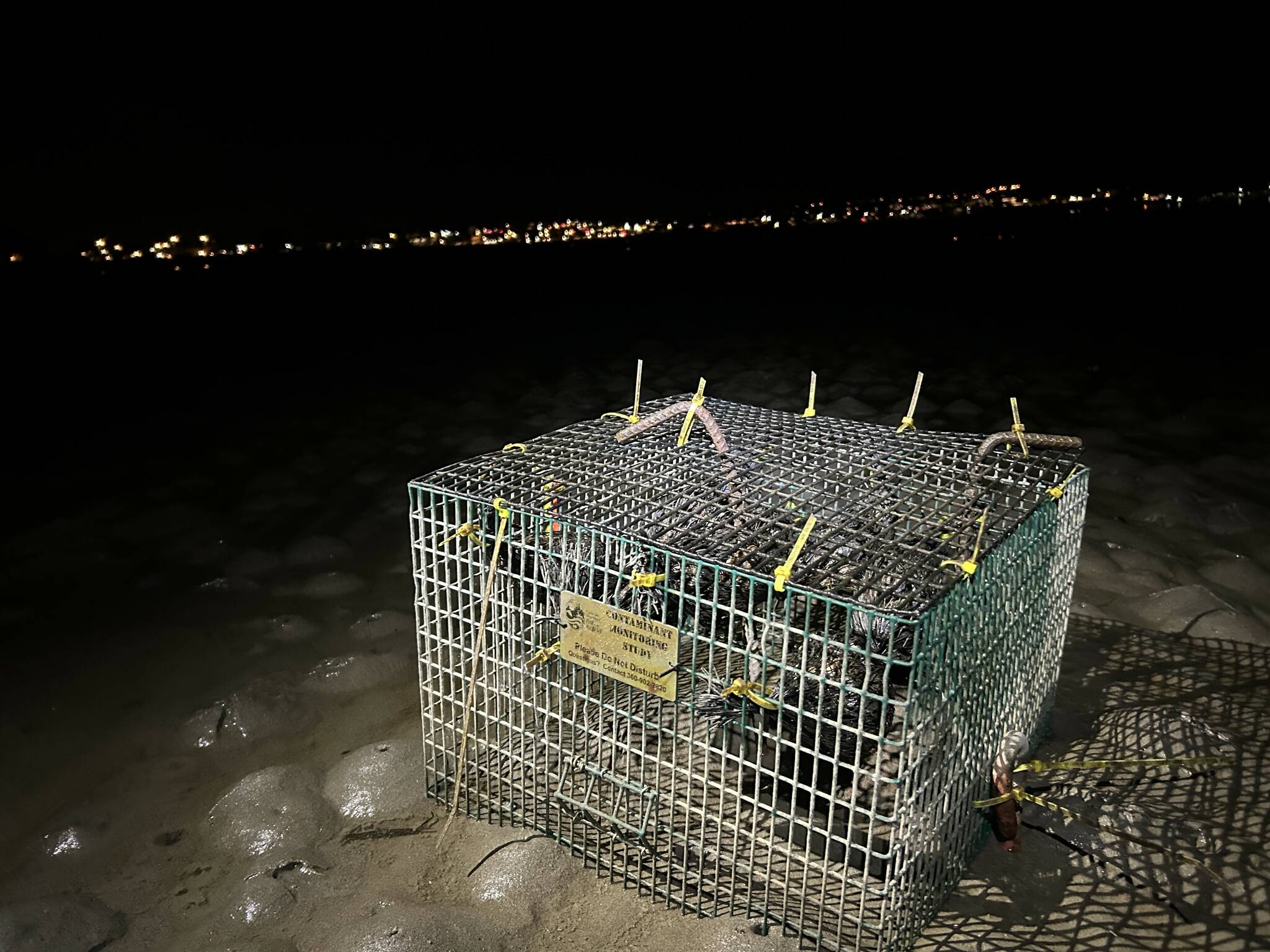The Washington Department of Fish and Wildlife is collecting data on toxic contaminants in shore habitats around Puget Sound using one special tool: mussels.
Mariko Langness is a biologist with the agency’s Toxic Biological Observation System. Since 2015, she has been conducting the Washington State Mussel Monitoring program — or “Mussel Watch” — to get a snapshot of what contaminants are found in a particular location and at what concentrations.
Mussels are a species used in toxic contaminant monitoring programs around the world because they are filter feeding organisms and can retain contaminants in their tissue for up to two or four months, Langness explained. A lot can be learned about the wellbeing of a habitat by examining these tiny molluscs.
Every two years in the fall, biologists and volunteers deploy a cage containing about 80 to 100 mussels in a specific location that the Department of Fish and Wildlife wants to take a closer look at. To aid this effort, Penn Cove Shellfish donates thousands of mussels, which are selected and bagged by Soundwater Steward’s citizen science volunteers.
Using “transplant” mussels instead of native, wild mussels has different advantages, Langness said. Scientists can place them on whatever site they need to collect data from, can choose what mussels are most fit for the study and can keep the mussels in the water for as long as they need to be exposed to contaminants. Furthermore, it becomes easier to count mortality and growth rates.
Some sites are monitored on a regular basis while others may be sampled only once, Langness said.
Last week, Biologist Danielle Nordstrom retrieved cages from Windjammer Park, Forbes Point, Penn Cove and Possession Point State Park with the help of volunteers. In just about four days, she said, all of the cages were pulled out of the water at all the sites around Puget Sound, with teams driving as far away as Olympia, Blaine and Port Angeles. About five out of 108 cages were lost, she said.
Once extracted, biologists shuck the mussels and blend them into a smoothie that is later sent to a lab, where scientists look for polychlorinated biphenyls, polycyclic aromatic hydrocarbons, polybrominated diphenyl ethers and dichloro-diphenyl-trichloroethane, though according to Langness, the former two are the most commonly found in mussel tissues.
Polychlorinated biphenyls, also known as PCBs, were once used in industrial products like electrical equipment, hydraulic fluids and heat transfer fluids. Though they were banned due to health concerns, particularly cancer, they can still be found in nature as they are released from old buildings and tools and end up in the stormwater.
PAHs, or polycyclic aromatic hydrocarbons, are chemicals that result from the combustion of coal, crude oil, gasoline, wood, garbage and cigarettes, according to the Centers for Disease Control and Prevention, and can be associated with lung and heart conditions.
Though Mussel Watch is still in its early stages, Langness said the data shows these chemicals are mainly concentrated near densely populated urban areas, like Elliott Bay in Seattle or Bellingham Bay up in Whatcom County.
While the majority of the mussels are turned into a big smoothie, some are baked in an oven to get their tissue’s dry weight. The length of the shell is then divided by the dry weight of the tissue, which helps scientists determine how healthy the mussel is, according to Nordstrom.
It’s still too soon to determine how humans and wildlife are affected by the contaminants found at each site, Langness said, as the program “only” started in 2012 and is currently on its sixth survey.
However, Nordstrom said, “Whidbey is generally a clean area,” and she would eat Whidbey mussels.
“The sites that we’re monitoring on Whidbey have lower concentrations compared to a lot of the other regions that we’re monitoring, especially compared to the rest of the urban embayments in Puget Sound,” Langness said.



